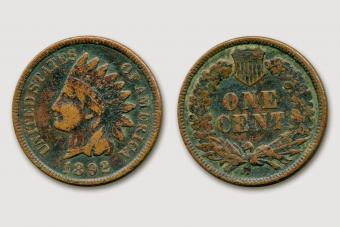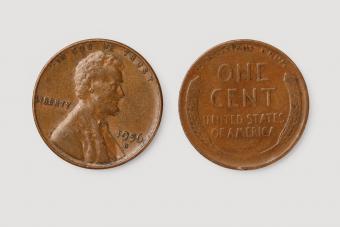
Collectible coins are a gateway into the wonderful world of collecting for many people. From antique store displays to grocery store tills, collectible coins can be found just about anywhere, making them a great collectible for beginners to start with. While not every coin that you find will get you into the news, every new find can be a valued notch in your collector's belt.
Must-Know Tips for First Time Coin Collectors
For decades, coins have been many children's first interactions with collecting as both a hobby and a profession. If you survey a small group of people, chances are high that one of them was gifted the iconic red-backed map of the United States of America with quarter-sized holes punched out for every state. The map was equipped to hold one American quarter from each of the fifty states, and the challenge to collect them all was inspiring. For others, finding the oldest coin in your change jar was as ubiquitous as trying to find every license plate from the fifty states on a road trip.
But, before you trade your grandfather's mercury dimes in for a swanky looking half-dollar, there are a few steps you should take to prepare yourself for the storied and competitive coin collecting world.
Take Time to Study the Trade
First and foremost, it's important to study up on the subject of the item that you're trying to collect, and this is particularly true for coin collecting. There's nothing quite as important as knowing not only what coins look like, but also how they're assessed. Even rarer coins can be worth insignificant amounts if they aren't in good condition. Thus, your first investment when coin collecting shouldn't be in buying any coins just yet, but in getting books on coin grading and identification.
For example, the Whitman Guide to Coin Collecting and A Guide Book of United States Coins are two highly acclaimed books outlining the basics of coin collecting that can get you started.
Keep the Proper Tools on Hand
Everyone who has ever dealt with giving exact change knows that coins are notoriously small. It's very difficult for any collector, no matter how trusting they are, to verify a coin's condition without the proper tools. So, if you're really invested in amassing a serious coin collection, you should make sure to buy a jeweler's loupe. These miniature magnifying tools that resemble tiny telescopes are essential for seeing the minute details on people's pocket change.
Start Your Collection Off Small
Although it can be tempting to buy every type of coin that sparks your interest out there, it's a better idea to start a small, specified collection first. If you stick to particular coins, years, mints, and so on, you can manage mastering your craft in a shorter amount of time. There's no need to overwhelm yourself with the sheer number of coins out there when a micro or mini collection can serve you great in your first few years.
Common Collectible Coins That Are Easy to Find
You shouldn't count out your grandfather's prized coin collection of cents he picked up in his youth just yet, because certain common coins can be collectible. While it's true that most average coins, no matter their age, aren't worth more than their face value, certain highly circulated coins are more collectible than others. Here are a few coins that you may have let slip through your fingers:
Indian Head Cents

Indian Head cents were produced from 1859 to 1909 and designed by James Barton Longacre, an engraver for the Philadelphia Mint. The head shows a stylized indigenous American in a feathered headdress, depicting Liberty. The reverse side features the shield of the United States at the top, with an oak wreath surrounding the sides of the coin, and a bundle of arrows at the bottom. While most Indian Head cents aren't worth that much, an 1864 penny sold for $161,000.
Mercury Dimes

Despite the name, the head on the Mercury dime is not, in fact, the Greco-Roman god Mercury; rather, it's a winged head of Liberty (the Phrygian hat with the wings closely resembles images of Mercury, causing the common confusion). Adolph A. Weinman designed the Mercury dime, and the simplicity and elegance of the head and the column on the reverse make it one of the most attractive US coins. It was minted from 1916 to 1945.
Wheat Cents

Wheat cents, officially known as Lincoln Wheat Ears cents, were minted from 1909 to 1958. The front shows the profile of Abraham Lincoln still in use on today's pennies, while the reverse shows two stalks of wheat. Both sides were designed by Victor David Brenner, a prolific designer and engraver.
Buffalo Nickels

Buffalo nickels, also known as Indian head nickels, were produced from 1913 to 1938. The head features a profile of a Native American and the tail features an American bison. Both were designed by sculptor James Earle Fraser, famous for this design and for his "End of the Trail" sculpture.
Morgan Dollars

Morgan silver dollars were minted from 1878 to 1904, and again for one year in 1921. After the discovery of vast quantities of silver in the American west, the US government ordered the Treasury Department to purchase tons of silver and create coins with it in an attempt to keep the prices up. The Morgan dollars, named after the designer George T. Morgan, were one of these projects. Because of their quantity of silver, many of these coins were melted down, thus raising the price for collectors.
Pre-1965 Silver Coins

While silver coins aren't as show-stopping as some coins are, they're a perfect coin for someone to start their collection with. They're relatively common to find in circulation and are at least worth the bullion amount of silver at the time of the purchase. What makes these quarters, dimes, and nickels special is that they were made out of 90% silver, as opposed to the compound that's been in use since the mid-century.
Valuable Coins That Are Worth Millions
Now, if you're really lucky, you just might come across some of these insanely valuable coins; though, your chances of winning the lottery are probably better;
- Brasher Doubloon - Sold for $9.36 million
- 723 Umayyad Gold Dinar - Sold for $4.04 million
- 1794 Flowing Hair Silver Dollar - Sold for $10 million
- 1792 Birch cent - Sold for $2.6 million
- 1943 Copper penny - Sold for $1.7 million (1943 steel penny values pale in comparison.)
Key Characteristics to Look for That Add Value to Coins
While the standard for determining coin values is having them graded by either the Professional Coin Grading Service (PCGS) or the Numismatic Guaranty Corporation (NGC), you can do some preliminary assessing on your own before buying any new product to add to your collection. This is especially important to do, as coin grading does cost money, so if you want to get one certified and ready for sale, then you want to be absolutely sure that they're worth at least the price to get them assessed.
That being said, the more that you actually look at coins and differentiate the different markings, symbols, signs of wear and tear, and production errors that can appear on these coins, the better you'll be at making good buying and selling decisions. Some of the key characteristics to look for using your handy loupe are:
- Double strike - Coins that are struck twice during minting will show an off-centered appearance of a part of the image, wording, or numerals.
- Planchet problems - When you see curved or straight lines running through a coin, or see an entire section of the coin missing, it's likely due to the planchet punching improperly into the coin.
- Doubling - Coins that have a mirror effect with the original image and a shadow of the image featured alongside it are known as doubled coins, and this can be caused by the dies not effectively making contact with the coin.
- Wear - Another thing to look at is how much damage a coin that's been in circulation has endured. Changing hands multiple times a day can slowly wear away any discernable designs on the face and back of a coin, so the ideal amount of wear that you should find on any coin is none.
How to Care for Your New Coin Collection
It's important to get into the practice of handling your collectibles with care early on in your collecting journey. When it comes to coins, you want to always handle them with clean hands or, in the case of expensive ones, with archival gloves. Even recently washed hands can leave fingerprints, and fingerprints carry oils that can corrode coins. Always hold coins by the edges rather than the faces, and when you put them down, put them down on a soft piece of cloth to avoid scratches.
Unless you know exactly what you're doing, be careful about cleaning coins, since removing their natural patinas can actually reduce their value in some cases. If you do want to clean a coin, use mild soap and water and don't scrub it. When you're finished, pat it dry with a soft towel. Store coins in cool, dry places, and with some kind of protective cover. You can purchase materials specifically designed for storing coins at coin dealers, hobby shops, and even some bookstores.
You're Never Too Old to Start Collecting
Collecting coins can be an easy and fun hobby for anyone to take on. As with most things, your collection will reflect the amount of research and time that you put into the craft, but even the smallest collection may be worthy of praise. Next, you might be interested to know what a 2 dollar bill is really worth, or you can explore Canadian coins worth money.







